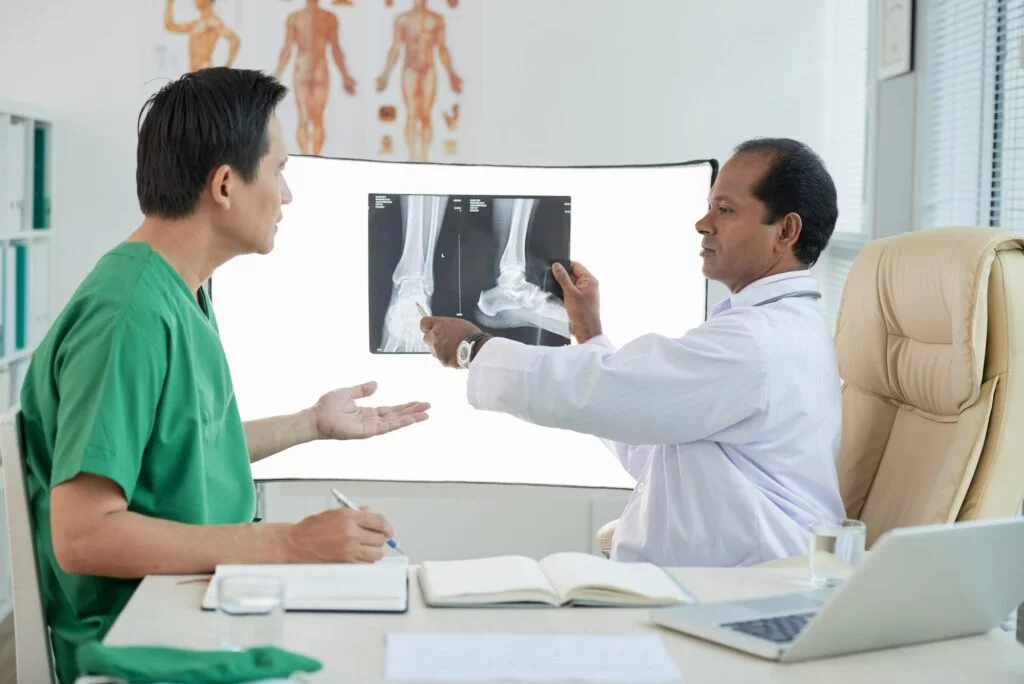Soft Tissue Masses
Soft tissue tumors or masses are a common occurrence on the leg and feet but early diagnosis is important. This is because the soft tissue mass can be due to a wide range of conditions, some non-threatening and some serious. If it is a serious condition, the faster that it is assessed and diagnosed, and the sooner treatment is given, the better the outcomes.
A soft tissue mass can manifest as a lump, a bump or a nodule, as a tumor, or as a localized area of swelling. It can occur anywhere on the body, but it is quite common in the legs. Depending on what the underlying cause is, they can be single or manifest as multiple clusters, and can be round or elliptic. They could be soft and may roll around when pressed, or they may be firm and hard. They could be painful or painless, may enlarge over time or may remain static.
When should you see a doctor?
Sometimes, these lumps could just be a swelling due to a bite or a wound and could disappear in a few days. You should see a doctor if it:
- Causes discomfort.
- Is oozing.
- Enlarges rapidly.
- Is red and inflamed.
- It causes fever
- Manifests lumps elsewhere on the body
- Causes muscle weakness
- Causes weight loss
- Is surrounded by lesions.
- Is painful to the touch.
- Isn’t symptomatic but hasn’t subsided for over a month.
Often, these masses are painless and non-symptomatic, hence people think that they are not harmful. But it is better to get it evaluated by a specialist to rule out any infection or malignancy.
Causes of Soft Tissue Masses
Leg lumps can be caused by any number of conditions, including
Infections
An infection may produce a lump with inflammation, pain and possible pus discharge. It includes:
- Abscesses – a painful collection of pus, usually caused by a bacterial infection.
- Boils – a pus-filled infectious inflammation caused by bacteria infecting one or more of your hair follicles.
- Cellulitis – bacterial infection of the skin and underlying tissues.
- Osteomyelitis – bone infection.
- Papillomavirus infections – causes plantar warts.
Inflammation
Some conditions that cause inflammation may produce leg lumps, especially around joints. This could include:
- Erythema nodosum – a type of skin inflammation that is located in a part of the fatty layer of skin.
- Gout –a type of arthritis caused by a build-up of uric acid in the joints that causes inflammation of the big toe.
- Osteoarthritis – a type of arthritis that causes brittle bones.
- Psoriatic arthritis – causes bumps on the surface of the skin.
- Rheumatoid arthritis – chronic autoimmune disease that causes inflammation around joints.
Trauma
Minor and severe injuries of the foot and ankle that cause internal trauma and inflammation can manifest as a lump. This could include:
- Broken bones.
- Hematoma – caused by bursting of blood vessels beneath the skin during a trauma.
- Sting or bite injuries.
Tumors
Both benign and malignant tumors can cause lumps, including:
- Fibroma – benign tumor composed of fibrous or connective tissue.
- Lipoma – benign fatty growth.
- Lymphoma – cancer of the lymphatic system.
- Melanoma – cancer from melanocytes.
- Nevi – benign or non- benign moles of the skin.
- Nonmelanoma skin cancers.
- Osteosarcoma – a type of bone cancer.
- Sarcoma -cancerous tumor of the soft tissue.
Should a soft tissue mass in the leg be attended to immediately?
Whatever the cause of the soft tissue mass, it is necessary to get it checked as early as possible. If left untreated it can cause complications that can include:
- Disability
- Deformity in the joint
- Nerve problems
- Permanent or chronic pain
- Spread of cancer if unattended
- Spread of infection if not treated on time
If you detect a soft tissue mass in the feet, whether it is symptomatic or asymptomatic, see a podiatrist and get it assessed. If it is harmless,it can be fixed easily. But if it isn’t, early detection can ensure that it doesn’t spread further or cause complications.


